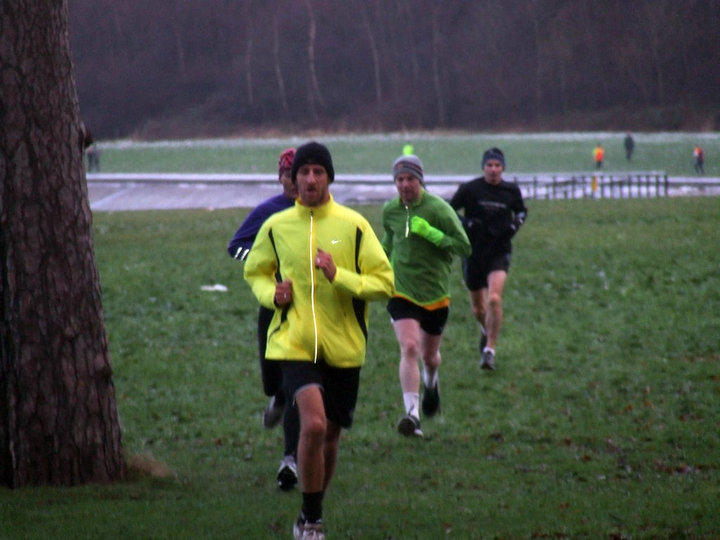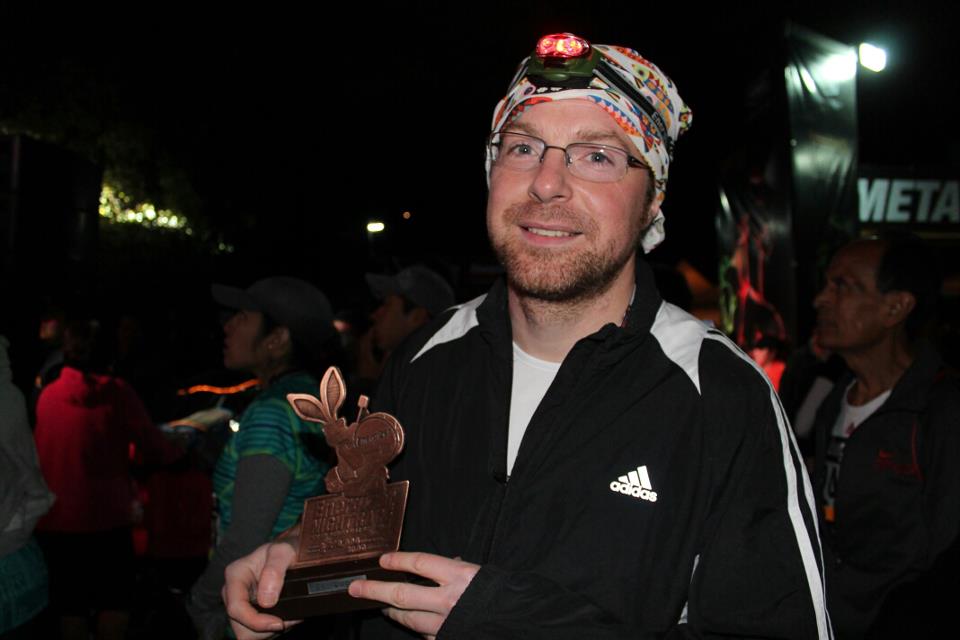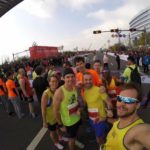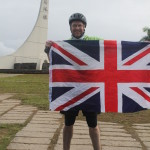Last week in our 101 guide to running equipment we looked at the shoe. This week we’re moving up the body to look at clothes, but before moving on let’s stay with the foot area to check out another piece of important running equipment, the sock.
Socks
Socks aren’t just for keeping your feet warm. They also form an important barrier between the shoe and the foot to reduce friction and move moisture away from the skin. While a good quality sock can allow you to run for miles without problems, an ill fitting or worn sock can leave you with a painful blister after a relatively short distance. To avoid this, I find a basic running sock without any stitching or features on the sole works best. Cushioned soles, double layers etc all claim to offer better protection for the foot but I haven’t found any of these to make much difference. Moreover, high-end socks can prove quite expensive, especially if like me you tend to go through your socks quickly. If you use a barefoot style shoe it’s also possible to run without socks but I’ve still to try this out over any significant distance.
With regard to general foot care, avoiding puddles and applying talcum powder before running can also reduce your chances of picking up a nasty blister. It’s also advisable to keep your toenails trimmed to avoid putting a hole in your socks. Lastly, it’s important to stress that if you use socks you need a specialised running sock. Multi-purpose sports socks or basketball socks are not advisable since these tend to go out of shape quickly putting uneven stress on different parts of the sole to cause blisters. At the moment I’m using the Nike Dry-fit low cut socks but I try to use high cut socks to protect my ankles if I’m running through scrub.
Shorts
Moving up to shorts. I know a lot of people prefer tights but I generally use shorts for running. Other options are tracksuit bottoms or running dresses. The Tarahumara Indian men wear a very exotic looking kilt for running with the ladies wearing a long dress or skirt. I guess a lot of what to wear here comes down to personal preference and whatever you’re most comfortable with. I use a lighter pair of shorts for races and have a few normal pairs with pockets and zips for training. One tip here is to tie your house keys to the cord of your shorts rather than putting them in a pocket where they might slip out when you’re fumbling for a chapstick or a handful of something to eat.
Shirt
As with the shorts, there are a variety options available for the top half of the body. Most of these normally involve some sort of dry fit or wicking material to move sweat away from the body. A cotton shirt is generally a bad idea for running since cotton absorbs sweat holding it next to the skin making you feel uncomfortable. Wicking material makes use of a capillary action to pull moisture away from the skin to keep you feeling fresh and dry. I first tried a wicking shirt when my uncle Danny kindly offered me one on the day of my first race, the Stranraer 10k in 2008. “You’ll look and feel smart”, he told me. I really noticed the difference and put in a strong finish in just over 41 minutes.

These days, I normally use a running vest for races. A vest not only looks professional but feels lighter and cooler when you’re in action. For training I’ll alternate between a vest and short sleeves to protect my shoulders from the sun. I rarely use long sleeves or a jacket to run, especially here in Mexico where it’s warm all year round. For me, it needs to be very cold before long sleeves start to feel comfortable. Running heats the trunk of the body up very quickly and while long sleeves can feel fine before a run, once you get going you’ll soon start to feel too hot. Long sleeves and jackets are really only beneficial for training in colder countries like Scotland, and even then only when the temperature dips close to zero. The fact is that it’s the extremities of your body that are more susceptible to the cold, so gloves and a warm hat become useful way before long sleeves or a jacket. In fact, in Scotland during the winter it’s not uncommon to see experienced runners with the slightly odd looking combination of a running vest, gloves and a woolly hat.
Of course if its warm enough and you have the physique for it you can always run sans shirt. Even if you don’t have the physique, it’s up to you and you should run with whatever feels comfortable. If you have a pale complexion like me, however, you should keep in mind that your shoulders and torso might be more sensitive to the sun and you might need to use sunblock. Also, if your racing and think you might want to take the shirt off, make sure your number remains visible by tagging it onto your shorts.
If you take part in a lot of races then chances are you’ll have no shortage of shirts. These days most races provide a shirt as part of the freebie race-pack and if, like me, you’ve been running for a while your cupboard will be full of them. These vary in quality but serve as a nice souvenir or trophy of your races. As for proper bought shirts, my favourites are, for racing the Adidas Running Response three stripes singlet and for training the Puma short sleeved running top. I also try to keep some reflective or fluorescent tops for running in the dark next to traffic.
Hat

The hat is a common part of the running kit but not all runners use one, at least not all the time. I normally run with a cap to stop my Irish hair sticking up, but the main advantage of a hat is protection against the weather. A cap can protect your face or neck from the sun or keep you warm by preventing wet hair being exposed to the elements. Other options for sun protection are do-rags or bandannas. These can sit on top of the head or go over the back the neck . I normally carry a do-rag and use it to cover the back of my neck if it’s a particularly sunny day and use my cap for shade at the front. Another option is a buff. This is a tube of stretchy material that either sits on your head, goes over the neck, or covers your neck and head like a balaclava. I’ve used these for racing at night to keep my head warm and for walking in the sun. The other option for keeping your head warm is a balaclava or woolly hat but, as with long sleeves, it really needs to be very cold before either of these will feel comfortable.
So, the recommendations for this week are;
- Plain running socks
- Light shorts for racing
- Shorts with pockets for training
- A running vest or t-shirt with wicking material
- Long sleeves, gloves and a woolly hat for when it gets very cold
- A reflective or fluorescent top to make yourself more visible in the dark for traffic
- A cap or buff for sun protection
Next week we look at accessories and hydration.






Leave a Reply